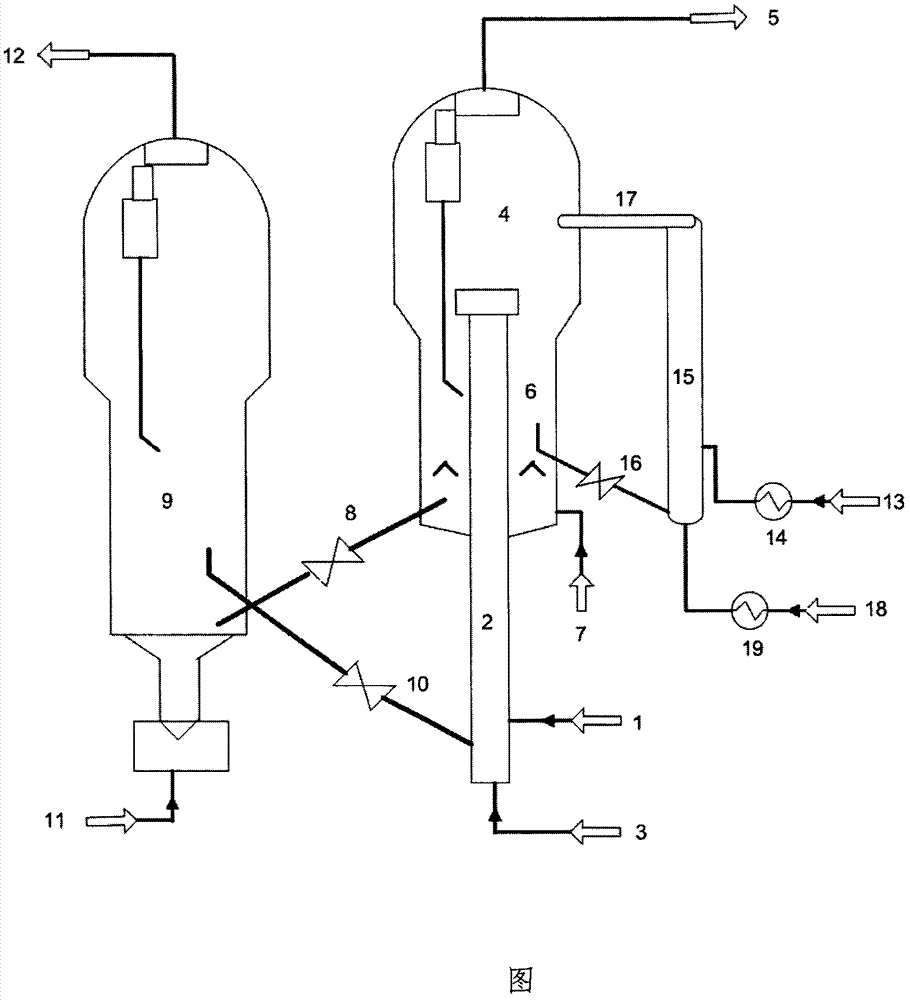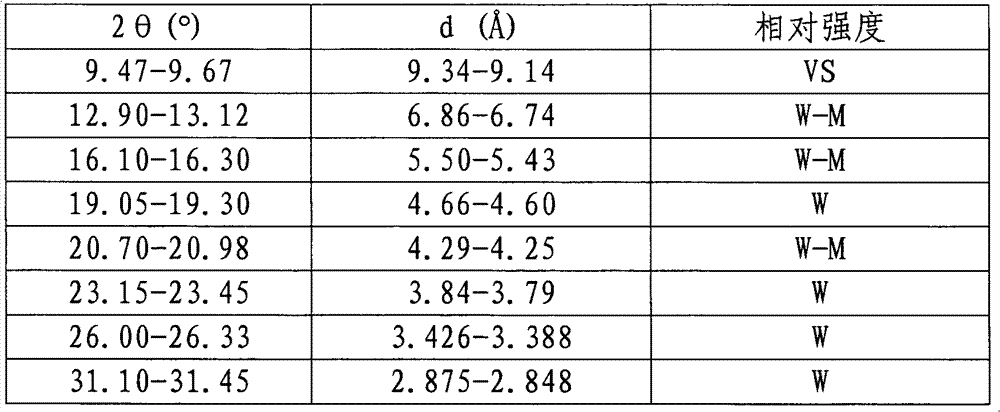Method for producing low-carbon olefin through petroleum hydrocarbon oil catalytic cracking
A technology for catalytic cracking and low-carbon olefins, applied in the field of low-carbon olefins yield, can solve the problem of low methanol conversion rate and high olefin selectivity, and achieve the effects of flexible product scheme, easy realization and wide range of processing raw materials
- Summary
- Abstract
- Description
- Claims
- Application Information
AI Technical Summary
Problems solved by technology
Method used
Image
Examples
Embodiment 1
[0056] This example illustrates the performance of the process of the invention on a mesoscale plant operated as a continuous reaction-regeneration operation.
[0057] The petroleum hydrocarbon catalytic cracking reactor is in the form of a riser with an inner diameter of 16 mm and a height of 4 meters; the outlet of the riser reactor is located in the settler to realize rapid separation of catalyst and reaction oil and gas, and the reaction product is sent to the subsequent separation system; catalytic cracking The raw oil is heated to 300°C and enters the riser to contact with the regenerated catalyst. The ratio of the mass flow rate of the regenerant to the mass flow rate of the catalytic cracking raw oil feed is 8:1. The mass flow rate of the steam entering the riser and the catalytic cracking The ratio of the mass flow rate of feedstock oil to feed is 0.25:1, the reaction time is 3 seconds, and the riser outlet temperature is 520°C.
[0058] The carbon-deposited catalyst ...
Embodiment 2
[0082] Example 2 illustrates the implementation of the method provided by the present invention on a mesoscale plant operating in continuous reaction-regeneration.
[0083] The petroleum hydrocarbon catalytic cracking reactor is in the form of a riser with an inner diameter of 16 mm and a height of 4 meters; the outlet of the riser reactor is located in the settler to realize rapid separation of catalyst and reaction oil and gas, and the reaction product is sent to the subsequent separation system; catalytic cracking The raw oil is heated to 320°C and enters the riser to contact with the regenerated catalyst. The ratio of the mass flow rate of the regenerant to the mass flow rate of the catalytic cracking raw oil feed is 7:1. The mass flow rate of the steam entering the riser and the catalytic cracking The ratio of the mass flow rate of raw oil to feed was 0.25:1, the reaction time was 4 seconds, and the riser outlet temperature was 510°C.
[0084] The carbon-deposited catalys...
Embodiment 3
[0095] This example illustrates the experimental results of the process of the invention carried out on a medium-scale plant operated in continuous reaction-regeneration.
[0096] The petroleum hydrocarbon catalytic cracking reactor is in the form of a riser with an inner diameter of 16 mm and a height of 4 meters; the outlet of the riser reactor is located in the settler to realize rapid separation of catalyst and reaction oil and gas, and the reaction product is sent to the subsequent separation system; catalytic cracking The raw oil is heated to 280°C and enters the riser to contact with the regenerated catalyst. The ratio of the mass flow rate of the regenerant to the mass flow rate of the catalytic cracking raw oil feed is 5:1. The mass flow rate of the steam entering the riser and the catalytic cracking The ratio of the mass flow rate of raw oil to feed is 0.25:1, the reaction time is 4 seconds, and the riser outlet temperature is 500°C.
[0097] The carbon-deposited cat...
PUM
| Property | Measurement | Unit |
|---|---|---|
| pore size | aaaaa | aaaaa |
| height | aaaaa | aaaaa |
| height | aaaaa | aaaaa |
Abstract
Description
Claims
Application Information
 Login to View More
Login to View More - R&D
- Intellectual Property
- Life Sciences
- Materials
- Tech Scout
- Unparalleled Data Quality
- Higher Quality Content
- 60% Fewer Hallucinations
Browse by: Latest US Patents, China's latest patents, Technical Efficacy Thesaurus, Application Domain, Technology Topic, Popular Technical Reports.
© 2025 PatSnap. All rights reserved.Legal|Privacy policy|Modern Slavery Act Transparency Statement|Sitemap|About US| Contact US: help@patsnap.com



